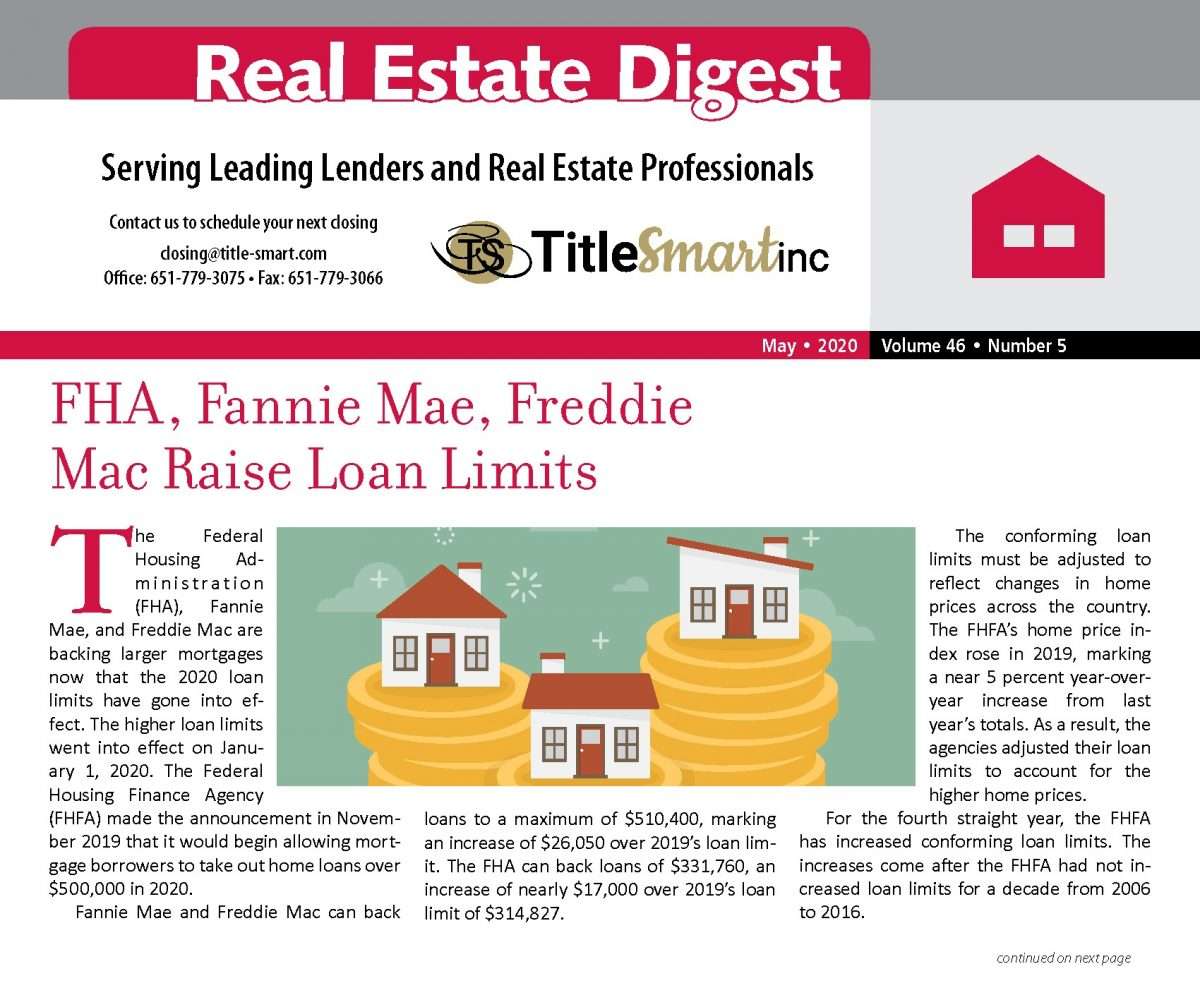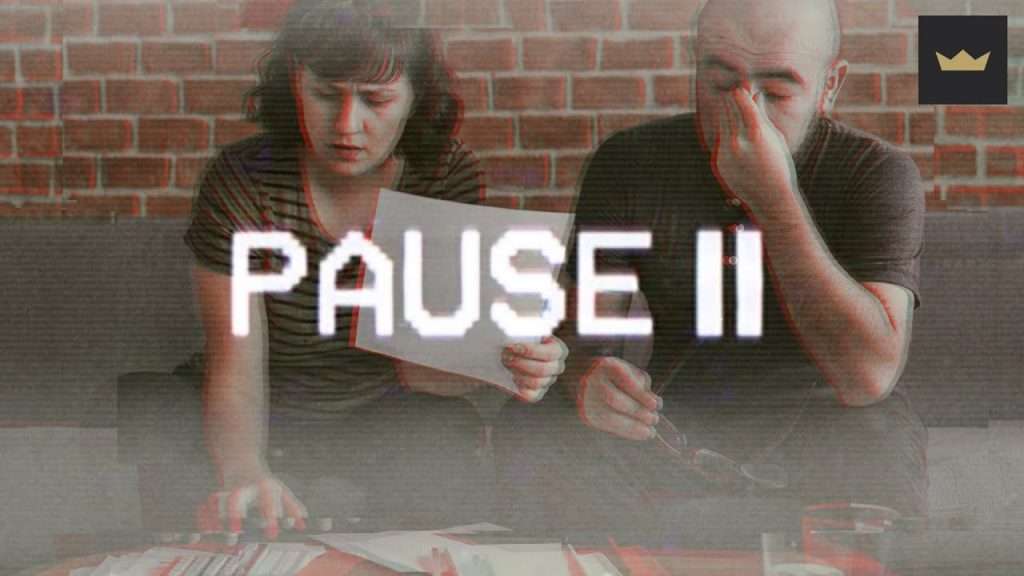Who Is An Fha Loan Best For
Since FHA mortgages are easier to qualify for, theyre particularly attractive for individuals in the following circumstances:
- Young or first-time homebuyers: Over 80 percent of all FHA loans lent in the past two years have been to first-time homeowners.
- Househunters with smaller savings: FHA loans statistically court lower down payments. Buyers with less competitive down payment capabilities may find FHA terms more favorable.
- Househunters with modest or variable income: The lower interest rates on most FHA loans can provide breathing room for buyers with tighter budgets or variable income, including freelancers or those who are self-employed.
Freddie Mac Targeted Affordable Housing Express
The Freddie Mac Targeted Affordable Housing Express loan can often be an ideal loan product for investors looking to purchase or refinance affordable housing properties. Eligible property types include stabilized properties with long-term HAP contracts, Section 8 vouchers, agreements that impose rent or income restrictions, tax abatements and LIHTC properties in year 11 or later of their compliance period. These loans are issued in amounts up to $10 million, with term options including 5, 7, 10 or 15-year fixed-rate loans or 5, 7 or 10-year floating-rate loans. Amortizations are 30 years. Leverage and debt service requirements depend upon the market in which a property is located for Top Markets 80% maximum LTV and 1.20x minimum DSCR is permitted, while for Very Small Markets 70% maximum LTV and 1.35x minimum DSCR is allowed .
Difference Between Fannie Mae And Freddie Mac
Both the role of Fannie Mae and Freddie Macs purpose is to purchase and guarantee mortgage loans. Fannie Mae was formed and created under the watch of Franklin D. Roosevelt back in 1938. The purpose was to insure that mortgage funding was sufficient and available at all times. Especially during periods of depression and tougher economic times.
Fannie Mae became a public enterprise back in 1968 and was publicly traded. Freddie Mac was formed back in 1970. The reason Freddie Mac was created was to create competition with Fannie Mae. The purpose was so that Fannie Mae would not have a monopoly on mortgage loans. Mortgage loans that both Fannie Mae and Freddie Mac purchased were all bundled up to form mortgage-backed securities, also known as MBS.
Also Check: Specialized Loan Servicing Settlement
Freddie Mac Seniors Housing Loans
Freddie Mac Seniors Housing Loans are a great way to finance seniors housing properties, including assisted living facilities, independent living communities and Alzheimer’s / Dementia memory care facilities. Assets with a certain amount of skilled nursing patients are permitted, though this cannot exceed 20% of the property’s overall income. Freddie Mac Seniors Housing Loans are non-recourse, generally start at $5 million, allow LTVs up to 75% and allow flexible terms between 5 and 30 years .
Freddie Mac Loan Guidelines: Conforming And Conventional Mortgages

Mortgages that meet the guidelines established by Freddie Mac and Fannie Mae are known as conventional or conforming” loans.
To give just a few examples, Freddie Mac and Fannie Maes guidelines for conforming loans dictate:
- The size of the home loan
- Minimum credit score requirement
- Down payment requirements
- Private mortgage insurance
- Debt-to-income ratios
Lenders generally prefer to make conforming loans so they have the option to sell them in the secondary market.
That might seem limiting for buyers who dont fit in the Fannie/Freddie box. However, conforming guidelines are often quite flexible.
There are standards and requirements, yes, but there are also exceptions, often in the form of compensating factors.
For instance, maybe you have a lot of monthly costs and a high debt-to-income ratio . It might seem as though your loan application will be denied. But, maybe, you have compensating factors that offset a steep DTI like a big down payment or a lot of cash in the bank.
For those that dont meet conforming loan guidelines, there are options. Mortgages backed by the government, like FHA, VA, and USDA loans, often have different standards for applicants.
Some lenders also create special mortgages that are non-conforming. Lenders keep these so-called portfolio loans until repaid. Portfolio loan standards may be much different than the standards for a conforming mortgage.
Read Also: Auto Loan Self Employed
How Do Freddie Mac Loans Work
Freddie Mac, or the Federal Home Loan Mortgage Corporation, buys conventional loans from small banks. These are the guidelines that Freddie Mac establish for loans:
- Debt-to-income ratio up to 45%, although 33% to 36% is recommended
- Down payment as low as 3% of purchase price for HomeOne loans, geared toward first-time buyers, and as low as 3% for Home Possible loans, designed for people such as first-time buyers, low-income borrowers and retirees
- PMI typically required when the homebuyer puts down less than 20% of home’s purchase price
Summary & Final Thoughts
No one-size-fits-all solution exists when it comes to financing your home or commercial real estate property.
Thats why Freddie Mac offers different loan programs that make it possible for borrowers from various situations to purchase their first home or investment property.
Its important to remember that Freddie Mac does not make loans. Instead, they purchase qualified loans from lenders. This transaction provides funding for banks. The banks, in turn, make more loans and drive down interest rates for borrowers.
Freddie Mac loans come with a certain set of guidelinesthese guidelines classify Freddie Mac loans as conventional, conforming loans.
Conventional loans can either be fixed- or adjustable-rate loans, and they can be used to finance almost any type of property, from a first home to an apartment complex.
To qualify for Freddie Mac loans, its important that you present
- Good credit score
Don’t Miss: Becu Car Repossession
Differences: Fannie Mae Vs Freddie Mac Lending Standards
All the loans bought by Fannie Mae and Freddie Mac are called conforming or conventional loans. But the two companies guidelines arent exactly the same.
Depending on your unique financial profile credit history, debt levels, current income, etc. theres a chance you could qualify for a conventional loan backed by one agency but not the other.
Thats why we recommend choosing a lender that offers both Fannie Mae- and Freddie Mac backed loans. Theyll be able to run your profile by both companies and see where you can more easily get approved.
Qualifying For Mortgage With Direct Lender With No Overlays
Home Buyers needing to qualify for government and/or conventional loans with no lender overlays can contact us at Gustan Cho Associates at 262-716-8151 or text us for a faster response. Or email us at Gustan Cho Associates is a mortgage company licensed in multiple states with no lender overlays on government and conventional loans and offer alternative financing programs. The team at GCA Mortgage Group also offers non-traditional mortgage loan programs such as NON-QM Loans, Bank Statement Loans for self-employed borrowers, and two-time perm construction loans. We also offer escrow advances on refinancing mortgages.
Recommended Reading: Usaa Vehicle Refinance
How Do Fannie Mae And Freddie Mac Work
Fannie Mae and Freddie Mac are not mortgage lenders and they do not lend money to people to buy or refinance homes. Instead, Fannie and Freddie buy mortgages from lenders which they turn into mortgage-back securities and sell to investors. By buying mortgages, Fannie Mae and Freddie Mac help lenders get the money they need to offer more mortgages to more customers.
New And Improved Home Possible
Freddie Macs Home Possible program, instituted in 2015, increased the availability of conventional financing to buyers with small down payments. However, the minimum down payment was 5 percent for most applicants.
Only those who qualified for Home Possible Advantage could apply for a Freddie Mac 3% down loan. And that meant meeting income restrictions that depended on the local cost of housing. Danny Gardner, a senior vice president with Freddie Mac, said in a National Mortgage News interview that the program had some problems.
For example, a loan could be derailed by a lender finding extra income, for instance, from a spouse. This would push the applicant over the income limit.
That caused a level of complexity for lenders and consumers to understand those nuances, Gardner said. By having a more broad-based product where the metric is whether or not you are a first-time homebuyer makes those other if/then statements obsolete and lenders can be more confident promoting an option for borrowers.
Apply for HomeOne
Lenders are now accepting HomeOne loan applications. If youve been locked out of homeownership due to income restrictions or down payment requirements, now is the time to apply
You May Like: Usaa Home Loans Credit Score
Don’t Miss: Capital One Auto Loan Approval
Who Is A Conventional Loan Best For
Conventional loans work best for people in the following circumstances:
- People with high credit scores: If your credit score is 640 or above, conventional loans are advantageous.
- People house-hunting for vacation or rental properties: Conventional loans can be used on secondary properties or homes the owner does not occupy.
- People with a 20 percent down payment: Generally, putting down at least 20 percent lets you avoid private mortgage insurance â and the thousands of dollars PMI can cost over the course of your loan.
Fannie Mae And Freddie Mac During The 2008 Housing Crisis

While there were several causes of the economic recession of 2008, some experts blamed Fannie Mae and Freddie Mac for the housing crisis. These organizations started to move away from only buying conventional loans and also began dealing in subprime loans.
Subprime loans are loans that come with a higher risk because borrowers dont adhere to the same stringent qualifications. Some of these loans were based on negative amortization, which means that homeowners only paid interest on the loans and thus never obtained home equity. When the financial crisis hit, many of these borrowers defaulted on their loans, thus causing the crash.
As a result, Fannie Mae and Freddie Mac were placed in federal conservatorship. Conservatorship happens when a person or entity is appointed to gain oversight and control of a company to bring it into a stable and solvent condition. Fannie Mae and Freddie Mac remain in federal conservatorship to this day.
During the financial crisis of 2008, the U.S. government spent $187.5 billion bailing out Fannie Mae and Freddie Mac. The money has since been repaid to U.S. taxpayers and the U.S. Treasury, and both organizations are once again profitable. There has been recent talk of taking them out of conservatorship and having them held once again as private entities.
Don’t Miss: Do Loan Officers Get Commission
How Fannie Mae And Freddie Mac Affect Your Home Loan
While they may not affect your day-to-day as a homeowner, Fannie Mae and Freddie Mac do affect your ability to get a home loan in some fundamental ways. Fannie Mae and Freddie Mac have guidelines for the loans that they buy, including how much is borrowed, the amount of the down payment and the credit score of the buyers.
Because Fannie Mae and Freddie Mac set the standards for the conventional home loans they are willing to buy, its in the lenders best interest to ensure that some or all of the loans they grant conform to the standards set for by Fannie Mae and Freddie Mac. So even though Fannie Mae and Freddie Mac arent directly granting loans to consumers, they do have an impact on the terms of your loan by setting guidelines for lenders.
Your loan will also be affected if it is sold because youll submit your payments to a different company than the one who granted you the loan. The terms of your loan will remain the same.
What Is Freddie Macs Home Possible
SimpleMoneyLyfe » Mortgages » What Is Freddie Macs Home Possible®?
Disclaimer: This post contains references to products from one or more of our advertisers. We may receive compensation when you click on links to those products. Read our Disclaimer Policy for more information.
If youre looking for a mortgage on a budget, Freddie Macs Home Possible program may be your answer.
Home Possible works with low-income borrowers who can afford a small down payment and their monthly mortgage bill thanks to the programs looser lending requirements.
Read Also: What Does Unsubsidized Loan Mean
Recommended Reading: Nerdwallet Loans
Fannie Mae And Freddie Mac Vs Fha: Then And Now
Traditionally, a conventional loan from Fannie Mae or Freddie Mac was seen as preferable. Some of that was due to the stigma of FHA loans being government-backed and the slightly higher interest rates and more expensive mortgage insurance requirements that came with those loans.
After the Great Recession, that perspective changed as homeowners began to refinance their mortgages through the FHA.
In recent years, the differences between a Fannie Mae loan or a Freddie Mac loan or an FHA loan have become less obvious.
To keep up with the economic challenges facing new home buyers, Fannie Mae currently offers a HomeReady® mortgage program and Freddie Mac offers a Home Possible® program.
Both allow home buyers to qualify for a conventional mortgage with lower incomes and as little as 3% down, without having to pay long-term MIP.
But even the most generous Fannie Mae and Freddie Mac programs still require a 620 credit score. If your score is lower than 620, the FHA may be your best option.
If You Want To Finance The Cost Of Energy Efficiency Improvements
Good option: Freddie Mac GreenCHOICE® mortgage
Energy Efficient Mortgages are specifically designed to help homebuyers purchase an energy-efficient home or finance the cost of energy improvements to a home over the life of the loan. The GreenCHOICE mortgage can be applied to a new home purchase or a no cash-out refinance to cover basic energy efficiency improvements, including:
- Air conditioning/heating replacement to high efficiency
- Solar water heaters
- High-efficiency refrigerators/freezers, water heaters and light bulbs
- And more
You May Like: Sss Loan Application
The Bottom Line: A Freddie Mac Mortgage Is A Great Way To Make Homeownership Possible
Freddie Macs Home Possible is aimed hoping low-income borrowers get a lower-cost mortgage. Fannie Maes HomeReady program is nearly identical. In order to qualify, youll need to make no more than 80% of the area median income. There are also similar programs available if youre looking to refinance with a lower income and higher DTI ratio.
If youre ready to look into your loan options, you can apply online or give us a call at 326-6018. Although you dont have to be a first-time home buyer to take advantage of these programs, they can be very beneficial. Check out these first-time home buyer assistance programs.
1Freddie Mac and Fannie Mae have adopted a new refinance option for loans to borrowers with incomes at or below 80% of area median income, and you may be eligible to take advantage of this program. If your mortgage is owned or guaranteed by either Freddie Mac or Fannie Mae, you may be eligible to refinance your mortgage under this refinance option. You can determine whether your mortgage is owned by either Freddie Mac or Fannie Mae by checking the following websites:
- Freddie Mac Loan Look-Up Tool or
- Fannie Mae Mortgage Loan Lookup
Take the first step toward the right mortgage.
Apply online for expert recommendations with real interest rates and payments.
History Of Fannie Mae
Fannie Mae was created as a federal government agency in 1938 as part of an amendment to the National Housing Act. Fannie Mae initially bought mortgages insured by the Federal Housing Administration and later added loans guaranteed by the Veterans Administration to the mix.
Fannie Mae was converted into a public-private, mixed-ownership corporation in 1954 under the Federal National Mortgage Association Charter Act. It became privately owned in 1968 and two years later became authorized to buy conventional mortgages in addition to FHA and VA loans.
The agency started to issue mortgage-backed securities in the 1980s to provide more liquidity in the mortgage investment market. It gets the money to buy mortgage-related assets by issuing assorted debt securities in the U.S. and international capital markets.
Don’t Miss: Stilt Loan
The History Of Freddie Mac
Congress chartered Freddie Mac in 1970 as a private company. As the secondary mortgage market expanded, the government authorized the company to add an additional supply of mortgage financing funds. Freddie Mac became the first GSE to purchase mortgages from lenders, package them and then sell them as mortgage-backed securities to investors.
What Fannie Mae Does

As a secondary mortgage market participant, Fannie Mae does not originate mortgage loans. Instead, it keeps funds flowing to lenders by purchasing or guaranteeing mortgages issued by credit unions, banks, thrifts, and other financial institutions. It is one of two large purchasers of mortgages in the secondary market. The other is its sibling Freddie Mac, or the Federal Home Loan Mortgage Corporation, which is also a GSE chartered by Congress.
After purchasing mortgages on the secondary market, Fannie Mae can pool them to form a mortgage-backed security . An MBS is an asset-backed security that is secured by a mortgage or pool of mortgages. Fannie Maes mortgage-backed securities are then purchased by institutions, such as insurance companies, pension funds, and investment banks. It guarantees payments of principal and interest on its MBSs.
Fannie Mae also has its own portfolio, commonly referred to as a retained portfolio, which invests in its own and other institutions mortgage-backed securities. Fannie Mae issues debt, called agency debt, to fund its retained portfolio.
By investing in the mortgage market, Fannie Mae creates liquidity for lenders, which in turn allows them to underwrite or fund additional mortgages. In 2020, Fannie Mae provided $1.4 trillion in liquidity to the mortgage market, which helped low-income Americans buy, refinance, or rent approximately six million homes.
Read Also: Chase Recast
Also Check: Can You Refinance With An Fha Loan
